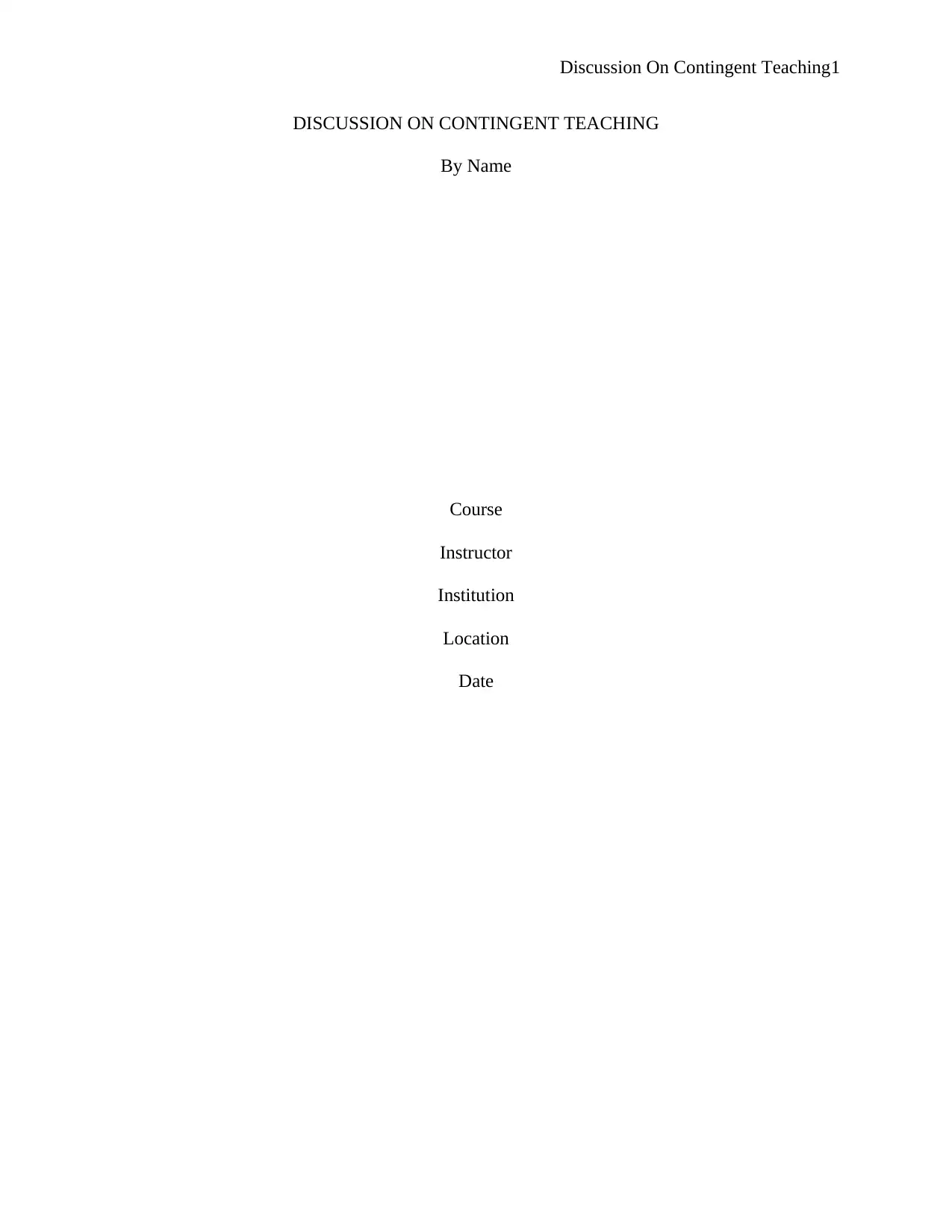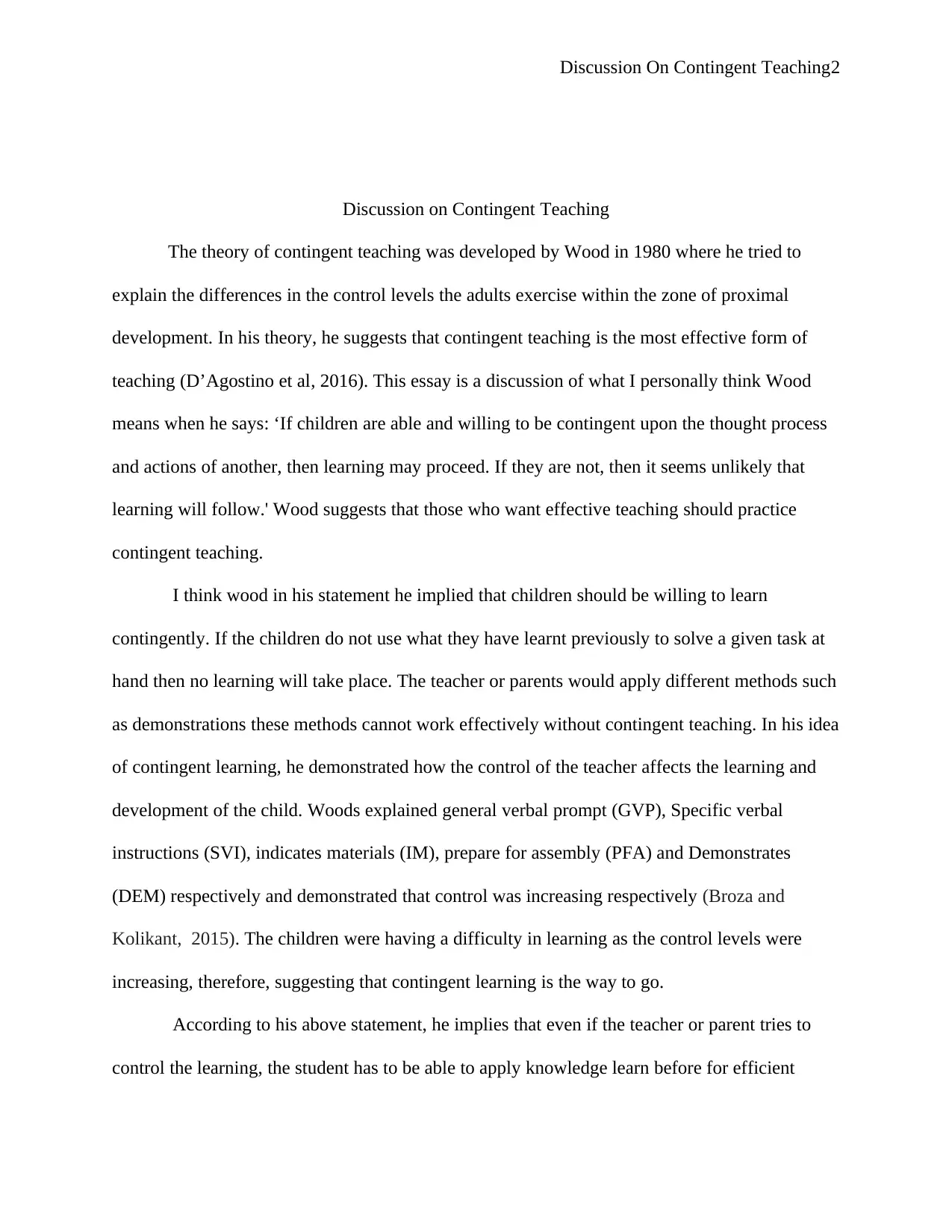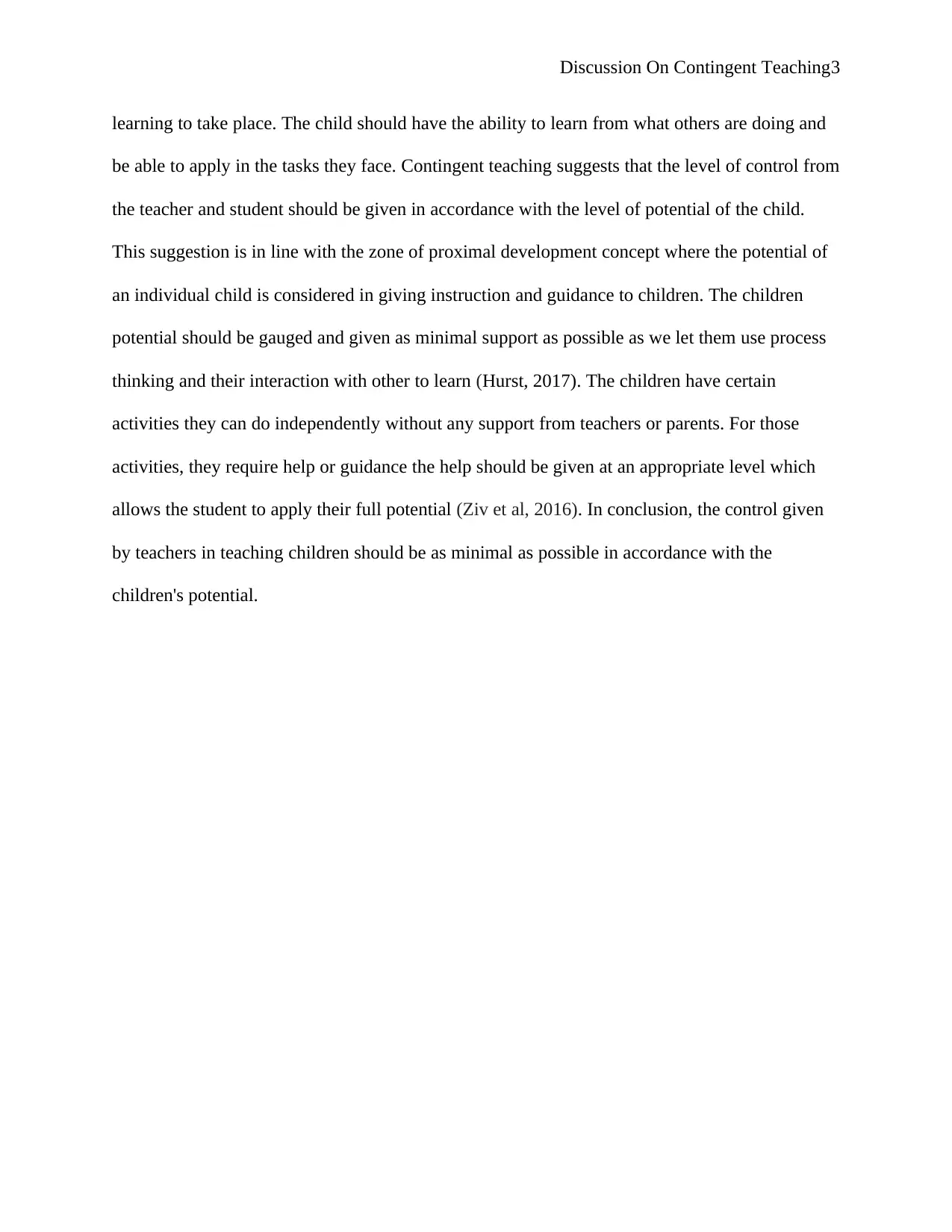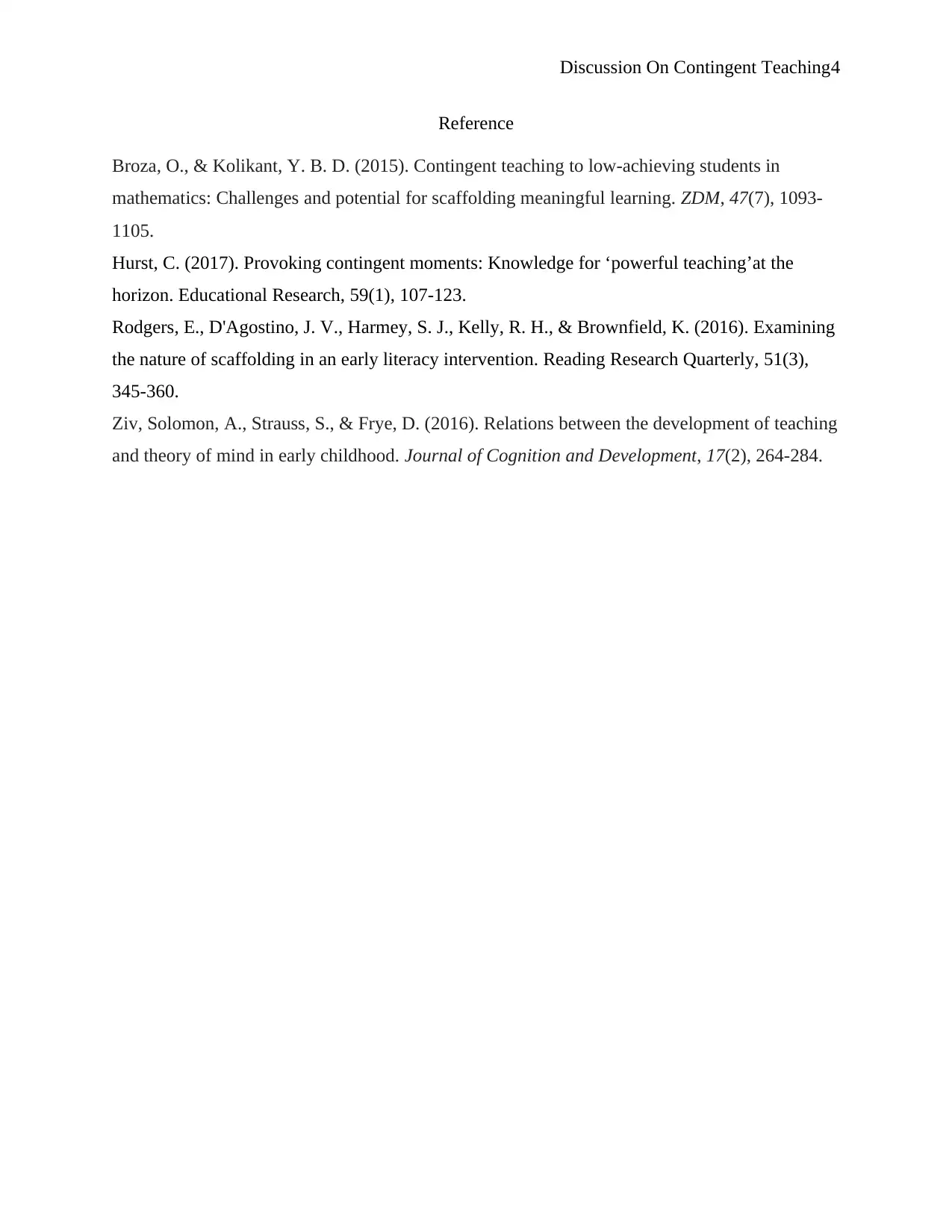University Essay: Contingent Teaching and Proximal Development
VerifiedAdded on 2023/06/13
|4
|715
|384
Essay
AI Summary
This essay discusses contingent teaching, a theory developed by Wood in 1980, emphasizing its effectiveness in promoting learning. The author interprets Wood's statement on children's willingness to learn contingently, highlighting the importance of applying prior knowledge to new tasks. The essay explores the levels of control exerted by teachers and their impact on student learning, referencing Wood's general verbal prompt (GVP), Specific verbal instructions (SVI), indicates materials (IM), prepare for assembly (PFA) and Demonstrates (DEM) and their effect on students. It aligns contingent teaching with the zone of proximal development, advocating for minimal teacher control based on the child's potential. The essay concludes that teachers should provide guidance appropriate to the child's capabilities, fostering independent thinking and interaction for optimal learning. Desklib offers similar essays and study resources for students.
1 out of 4











![[object Object]](/_next/static/media/star-bottom.7253800d.svg)